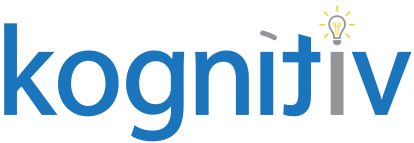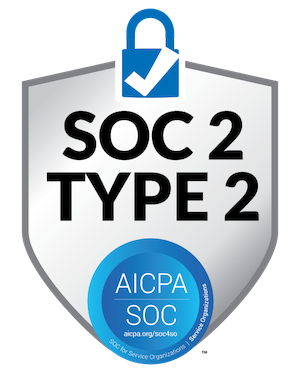10 Reasons Why Everyone Should Love BIRT

I’ve had the privilege of working in the Workday ecosystem for a number of years. Starting out on the client side, I wrote reports as an HRIS analyst. I loved the way report writing was structured in Workday; it was so different from previous systems I had worked with. My company sent me to all of the available reporting training, including one that introduced me to Business Intelligence Reporting Tools (BIRT).
At my second Workday client, once my colleagues learned I “knew” BIRT, I began getting requests to work on templates. I had the privilege of working with someone who knew the ins and outs and taught me a great philosophy for building a BIRT that I wish everyone knew: remember to build for the person who will have to work on this next. They won’t know or understand your design decisions, so if you do something “not normal”, explain it.
Since those days, my own work has developed to the point where I not only have specific rules about how BIRTs are supposed to be built (name your tables and grids and include notes!), I have also configured numerous custom templates across nearly every domain in Workday. Custom Invoices, Total Rewards Statements, Payslips, Transcripts, and Wage Theft Notices are among some of the semi-standard templates.
BIRT involves niche experience and many times a BIRT project will get derailed by the most minute of changes in a report or a client’s requirements. It can be complicated, particularly when time constraints or lack of experience impair the build. The more experience the builder has, the more likely a project will go smoothly. This is true of virtually any project anyway, but especially something with potential gotchas like BIRT.
But let’s get to the reason why you’re here and I’ll share the 10 reasons why everyone should love BIRT!
- BIRT is less complicated than you think.
There are only two absolute requirements: an advanced web-enabled report from Workday and Workday Studio with report design installed. In fact, the better you are at report building, the more likely you are to build some pretty cool BIRT documents.
- If you have built tables or grids in Microsoft Word or Google Docs, you can use BIRT. Really!
Everything in BIRT is built around containers. Tables have headers and footers, and show all content from multi-instance fields, whereas grids pull the top level instance or single instance fields. Both containers allow flexibility in structure and organization and should look and feel familiar.
- Building a BIRT is the easiest way to amaze your colleagues with how incredibly brilliant and creative you are!
I think this point is so fun. I am always amused by my colleagues who are impressed by something I built that was not only logical but easy enough to do. Because it is BIRT, it is classified as mysterious and confusing. Don’t say I didn’t warn you the first time you hear audible gasps during a demo.
- Building a BIRT is incredibly satisfying if you like to see tangible results for your work.
I love the way working with BIRT takes someone’s idea (let’s have a Talent Card that looks like this one I found on the interwebs, but with all these changes) and makes it happen. More than just adding a condition rule in a business process, this kind of build results in the wholesale creation of a previously non-existent-except-in-a-brain thing. It is kind of rare in the world of HR and Finance to have that kind of tangible outcome since we don’t bake cakes or assemble furniture.
- You do NOT need to know any programming languages to build BIRT.
If you know JavaScript you can create even more interesting and visually appealing documents! After nine years, I have only recently taken my first JavaScript course. It’s great and I will use it but it is an additional tool, not a requirement.
- There are only two limitations to Workday BIRT designs:
- A circular or rounded worker photo cannot be incorporated into the design as rounded or circular
- Only one Data Source can be used – you can only merge Data Sources by using PRISM or a Studio Solution
- You can use HTML in BIRT layouts to format text (and many of the HTML codes are built into the text block insertion screen)
This makes it easy to add fields from your report data, web links, embedded bold or italicized text, or even to change the colors of a font mid-sentence, without adding multiple fields.
- You can include charts, multiple business objects on the same data source, embedded images, and more in your design.
Or you can write a simple letter and only customize details about a worker! Either way, the flexible application of BIRT to your report means the possibilities are limited primarily by your imagination.
- You can create new data fields in a report design based on existing data and therefore combine business object fields that you could not within Workday.
If you’ve ever tried to build an arithmetic calculation in Workday with fields from several areas that are not directly connected, you know exactly what I mean. In a BIRT design, you can do that math easily. You can also concatenate or substring text fields, replace one piece of content with another, or match category names to values. Do you need to calculate the value of PTO for an employee on a total rewards statement on the basis of their actual payroll earnings? 100% doable in BIRT.
- Knowing how to build a BIRT will earn you friends in every area of the ecosystem.
Remember #3? Well, not only can you amaze your colleagues, but you can also offer insights in The Community, attend Brain Dates at Workday Rising, or just whip up a quick BIRT at your local user group. I promise that the way to a Workday nerd’s heart is through a magnificent BIRT presentation.
I’ve spent the last decade-plus of my career learning about and configuring Workday and along the way, I kind of stumbled into this space called BIRT. Like many others, until I got to know just how much was possible, I thought it was a necessary evil. In the years since, I have found myself more and more enamored with the various and sundry ways that BIRT makes Workday accessible to workers, managers, payroll teams, finance administrators, and educators that want recognizable, digestible content at their fingertips. So, I love BIRT and you should, too.
To find out more about BIRT or the services Kognitiv can offer you, contact us today!




